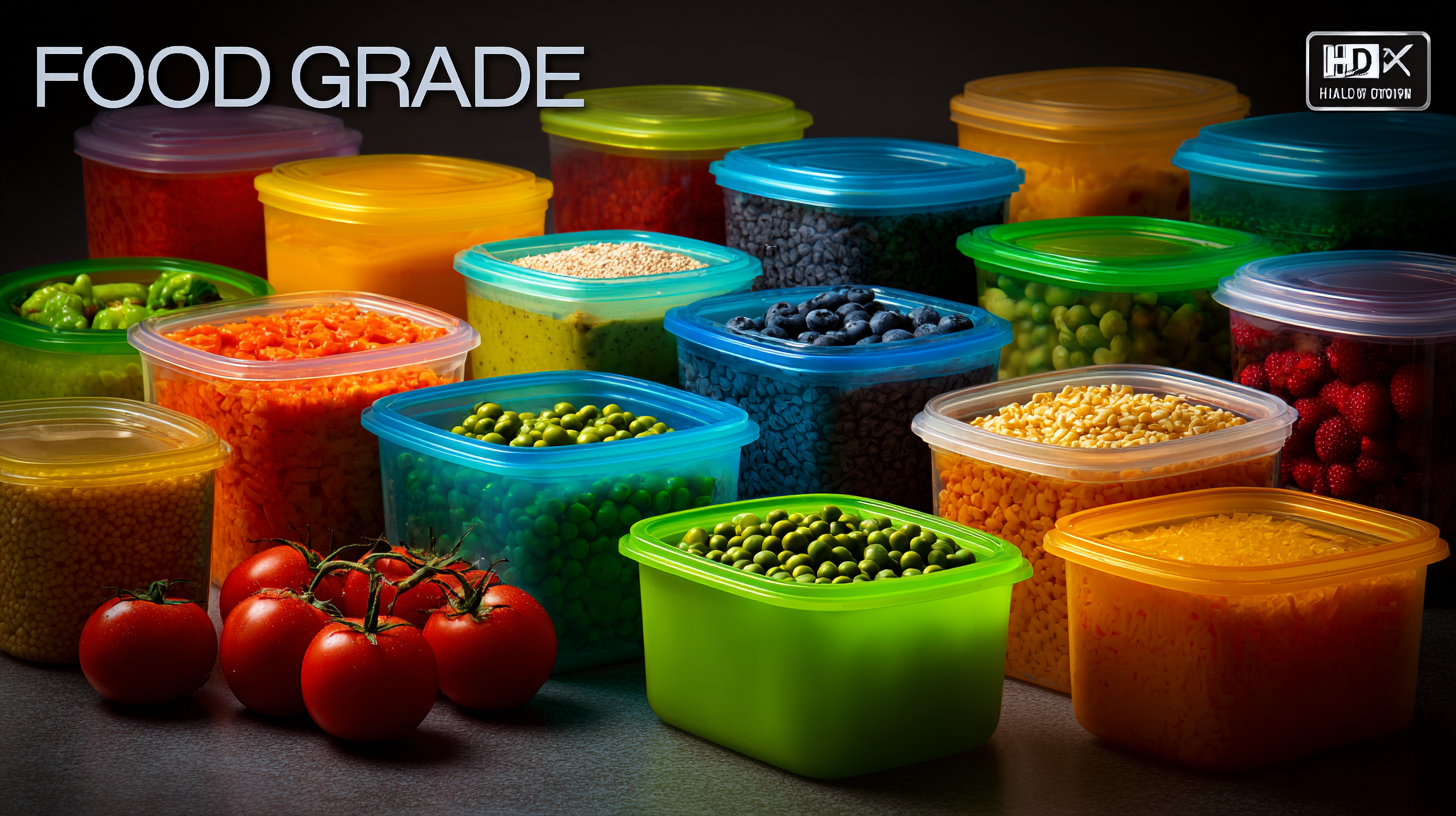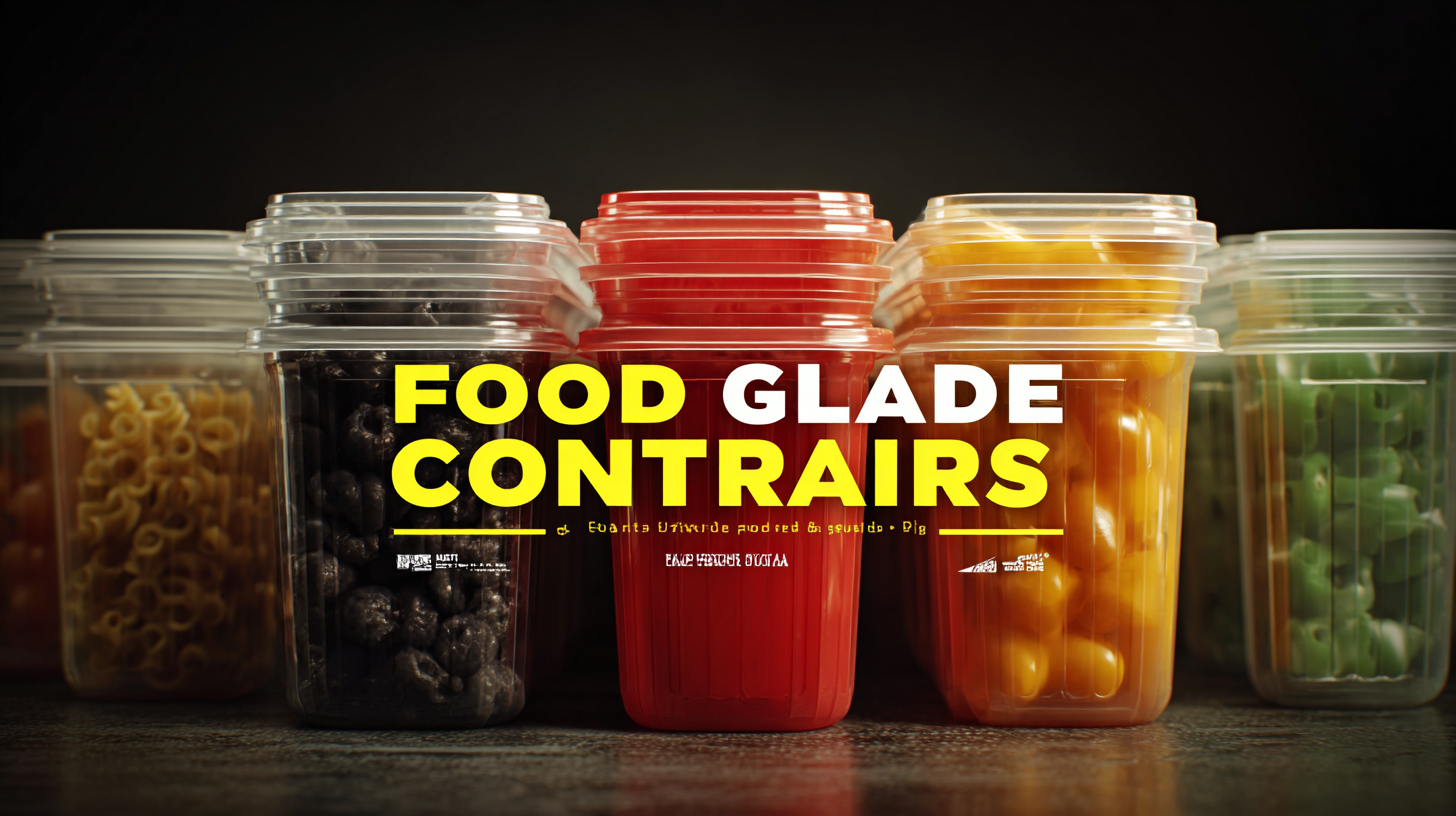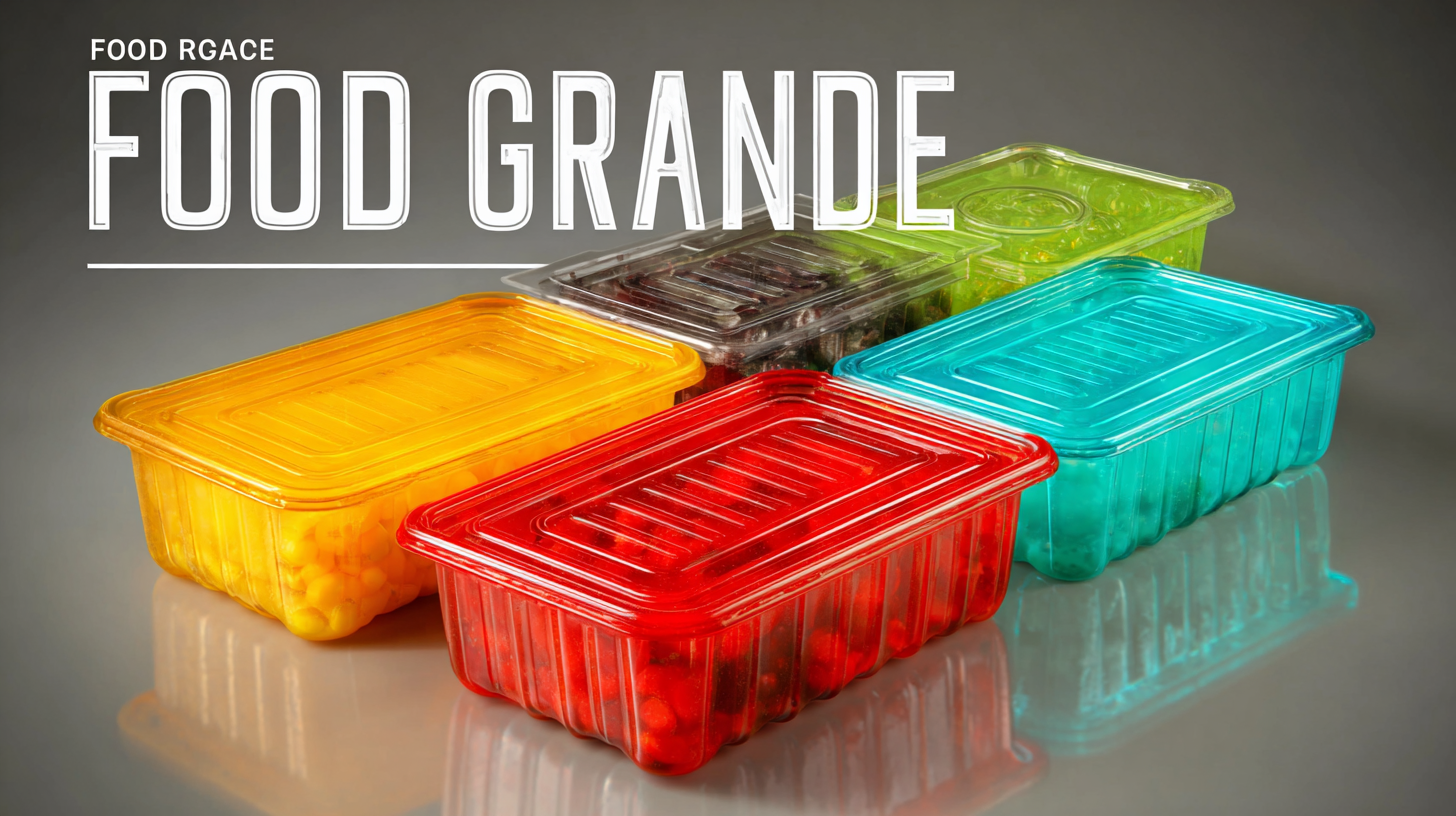
Exploring the Unique Features and Applications of Best Food Grade Plastic Containers
In an era where sustainability and safety in food storage are paramount, the significance of Food Grade Plastic Containers cannot be overstated. These containers are specifically designed to meet rigorous standards, ensuring that the materials used are safe for food contact and do not leach harmful chemicals into our meals. As we delve into the unique features of the best food grade plastic containers, it becomes evident that they are not only versatile and durable but also practical for a variety of applications, from meal prep to long-term storage. Whether you're a health-conscious individual, a culinary enthusiast, or simply someone looking to organize their pantry, the right food grade plastic container can revolutionize your approach to food storage.

Join us as we explore the innovative advancements and future trends in this essential category, highlighting how these containers are uniquely equipped to meet the demands of modern living while keeping our food safe and fresh.
Key Characteristics of Food Grade Plastics and Their Safety Standards
Food grade plastics are specifically designed to meet stringent safety standards, ensuring that they are safe for storing food and beverages. The most common types of food grade plastics include polyethylene (PE), polypropylene (PP), and polycarbonate. According to the U.S. Food and Drug Administration (FDA), materials intended for food contact must comply with regulations that assess the potential migration of substances into food. For instance, high-density polyethylene (HDPE) is favored for its durability and chemical resistance, making it an excellent choice for containers that hold liquids and solid foods. A report by the Plastics Industry Association highlights that over 25% of the plastic produced in the U.S. is for food packaging, showcasing the industry's commitment to using materials that are both functional and safe.
In addition to material safety, food grade plastics are subjected to specific tests that evaluate their performance under various conditions. For example, the American Society for Testing and Materials (ASTM) has established standards to assess the leachability of chemicals, ensuring that no harmful substances migrate into food. As per a study by the National Institutes of Health, food grade plastics demonstrate a much lower risk of leaching compared to non-food-grade materials, highlighting the importance of selecting the right containers. This has led to a rising trend among consumers prioritizing food safety, with a 2021 survey indicating that 72% of people would prefer food packaging labeled as BPA-free.
Emerging Trends in Sustainable Materials for Food Packaging by 2025
As the demand for sustainable food packaging rises, the food packaging industry is witnessing a significant shift towards eco-friendly materials. By 2025, it is projected that the global biodegradable plastics market will reach approximately $6.4 billion, growing at a compound annual growth rate (CAGR) of 16.5%. This increase is driven by rising consumer awareness of environmental issues and stricter regulatory frameworks surrounding plastic waste. Companies are now investing in innovative materials such as plant-based plastics, which not only meet food safety standards but also lessen the environmental impact traditionally associated with plastic packaging.
In addition to biodegradable options, recycled content is becoming a key player in the food packaging landscape. According to a recent report by Smithers Pira, the market for recycled plastic packaging is expected to grow to around $66 billion by 2024. This surge is propelled by advancements in recycling technologies that allow for the safe use of post-consumer plastics in food-grade applications. Many companies are now focusing on circular economy principles, redesigning packaging systems to minimize waste and maximize plastic recovery. As we approach 2025, the combination of biodegradable materials and innovative recycling strategies is set to redefine the future of food grade plastic containers, ensuring safety without compromising sustainability.
Exploring the Unique Features and Applications of Best Food Grade Plastic Containers - Emerging Trends in Sustainable Materials for Food Packaging by 2025
| Feature | Description | Sustainability Impact | Applications |
|---|---|---|---|
| BPA-Free Materials | Containers made without Bisphenol A, ensuring safety for food storage. | Reduces health risks associated with chemical leaching. | Food packaging, meal prep containers. |
| Recyclable Materials | Containers designed to be recycled, decreasing waste. | Contributes to a circular economy. | Takeout containers, food storage. |
| Biodegradable Options | Containers that decompose naturally in the environment. | Helps reduce plastic pollution. | Event catering, single-use items. |
| Enhanced Barrier Properties | Improved prevention of moisture and oxygen transfer. | Extends shelf life and reduces food waste. | Packaging for perishable goods. |
Impact of Plastic Container Innovations on Food Preservation Techniques
The innovations in food-grade plastic containers have significantly transformed food preservation techniques, leading to enhanced shelf life, safety, and convenience. According to a recent report by Bastien et al. (2023), the global food packaging market, valued at approximately $500 billion, is projected to grow by 5.5% annually, driven by advancements in materials like polyethylene terephthalate (PET) and polypropylene (PP). These materials not only offer resistance to moisture and chemicals but also play a crucial role in preventing the penetration of oxygen, which is vital in preserving the freshness and nutritional value of food products.
Moreover, the introduction of smart packaging technologies has further revolutionized the way food is preserved. Innovations such as oxygen scavengers and moisture regulators have been integrated into plastic containers, allowing real-time monitoring of food conditions. A study published in the Journal of Food Science indicates that these technologies can extend the freshness of perishable goods, reducing food waste by up to 30%. As consumer demand for sustainability and convenience continues to rise, the role of food-grade plastic containers will undoubtedly expand, paving the way for more efficient and environmentally friendly preservation methods.

Market Analysis: The Growth of the Food Grade Plastic Container Industry
The food grade plastic container industry is experiencing remarkable growth, driven by increasing consumer demand for convenient and safe food storage solutions. With the global plastic container market poised to reach a valuation of USD 104.1 billion in 2023 and expected to grow at a compound annual growth rate (CAGR) of 5.5% from 2024 to 2030, the potential for innovation and development within this sector is immense. This trend is also mirrored in the food storage container market, which was valued at USD 163.5 billion in 2024 and holds a projected CAGR of 4.5% from 2025 to 2034.
The rise in sustainability awareness is prompting companies to focus on eco-friendly packaging options. Innovations within the food grade plastic containers are enhancing safety and usability, further contributing to their adoption across various sectors, including food distribution and retail. Additionally, alternative materials like PETG are gaining traction, with their versatility in not just food packaging but also in healthcare and industrial applications. This shift demonstrates a broader acceptance and integration of advanced materials, making food grade plastic containers an integral part of strategic packaging solutions for the future.
Future Applications of Biodegradable Plastics in Food Storage Solutions
Biodegradable plastics are emerging as a game-changer in food storage solutions, driven by the increasing demand for sustainable practices. These materials not only help reduce plastic waste but also ensure safe and hygienic storage for food items. One of the promising applications of biodegradable plastics is in the production of containers that can decompose naturally, minimizing their impact on the environment. As consumers become more environmentally conscious, the use of such materials in food packaging is likely to rise, offering a more sustainable alternative to traditional plastic containers.
Tip: When selecting food storage containers, look for labels that specify "biodegradable" or "compostable," ensuring you're making an eco-friendly choice.
Furthermore, innovations in biodegradable plastic technology suggest that future applications may include not just container production but also film wraps and bags that maintain food freshness while breaking down efficiently after use. This aligns with the growing trend towards zero-waste lifestyles, where consumers seek products that align with their values of sustainability and health.
Tip: Always check for certifications on biodegradable products to ensure they meet environmental standards.

